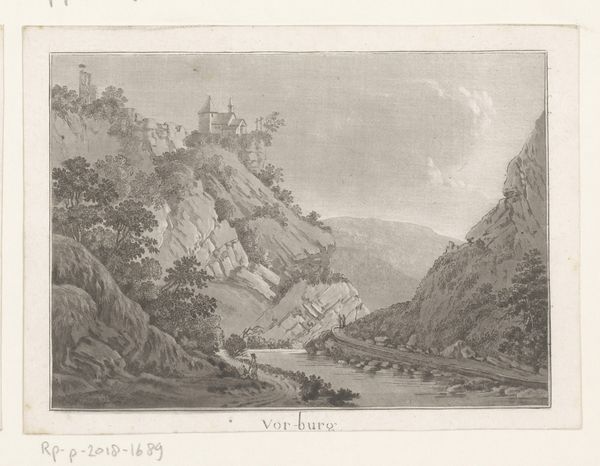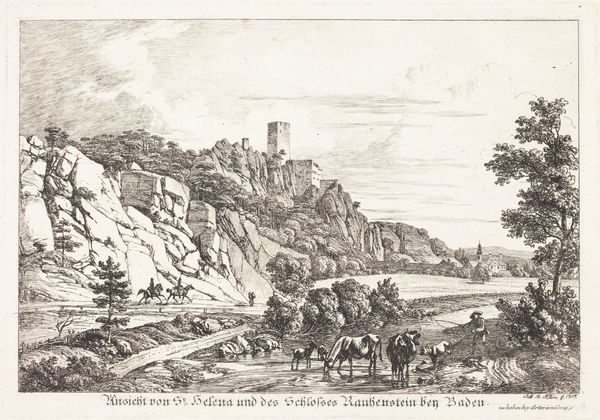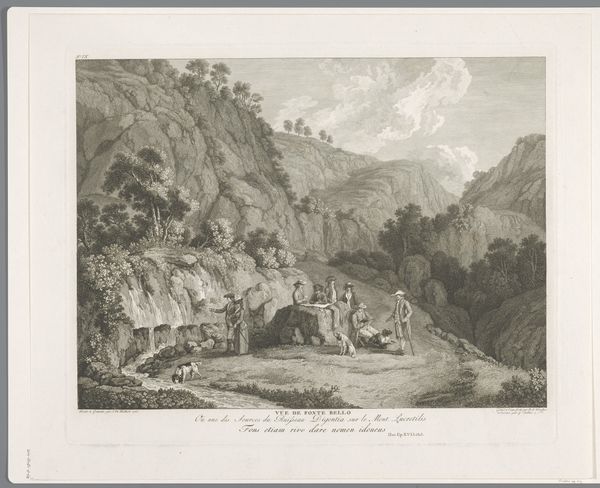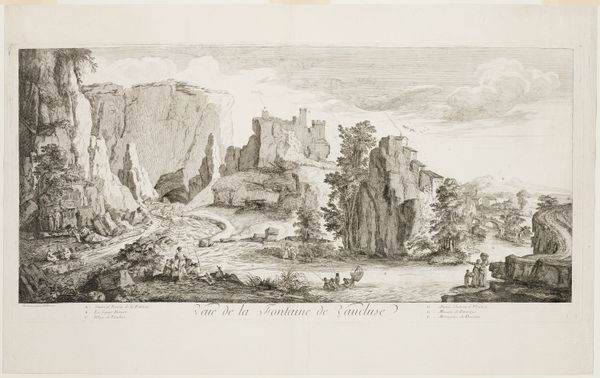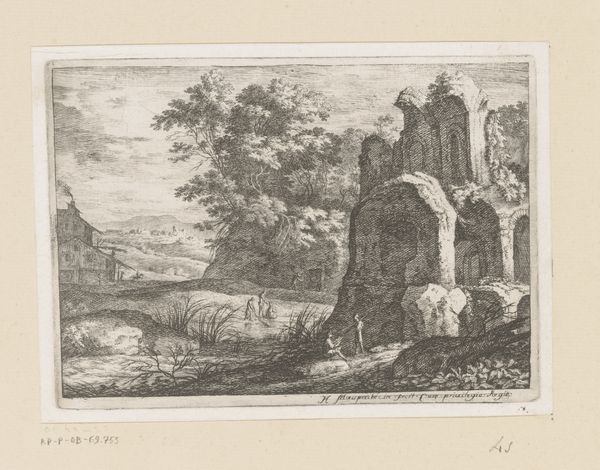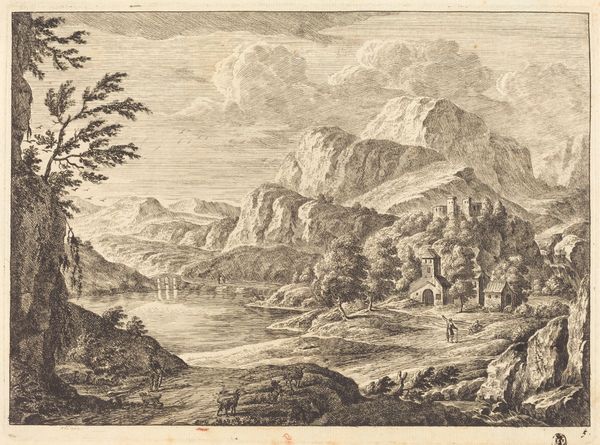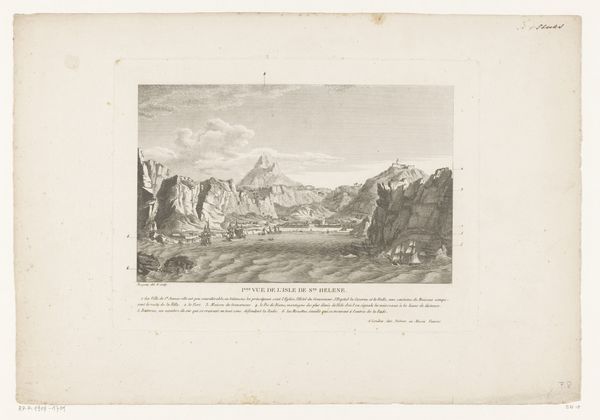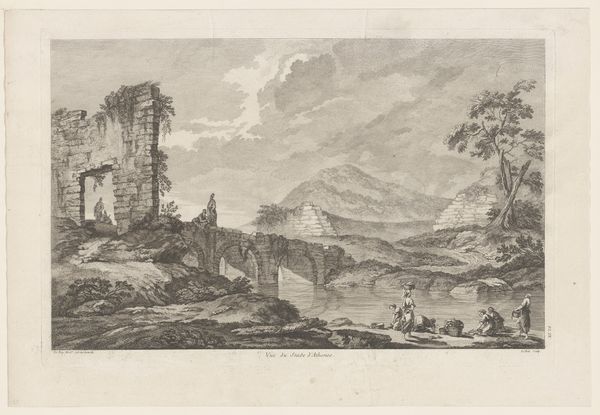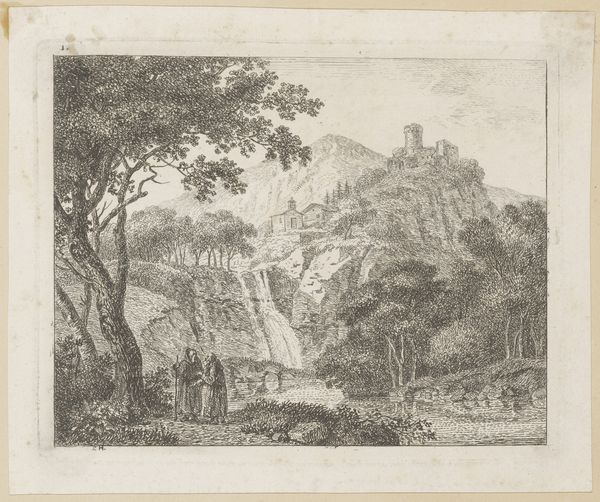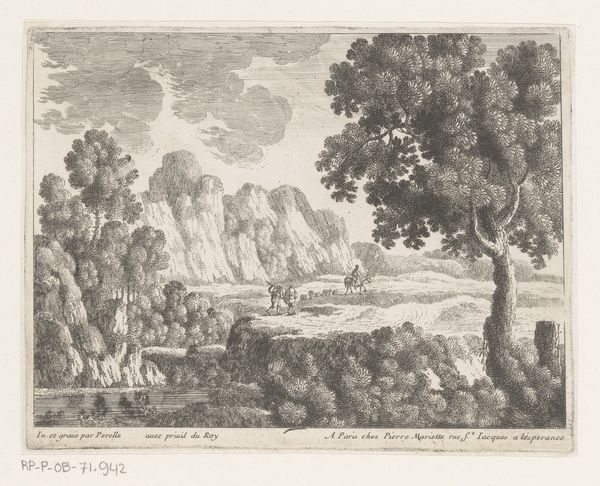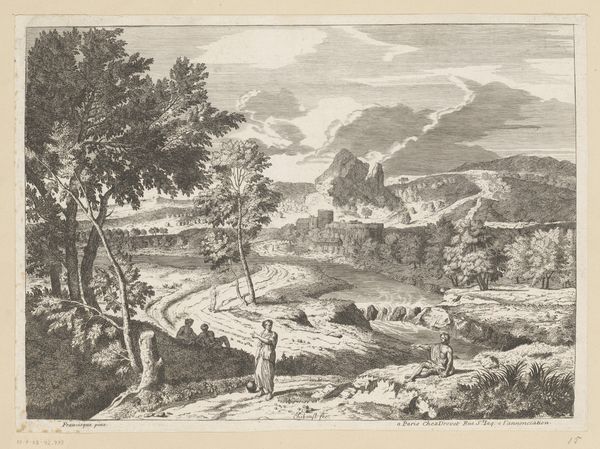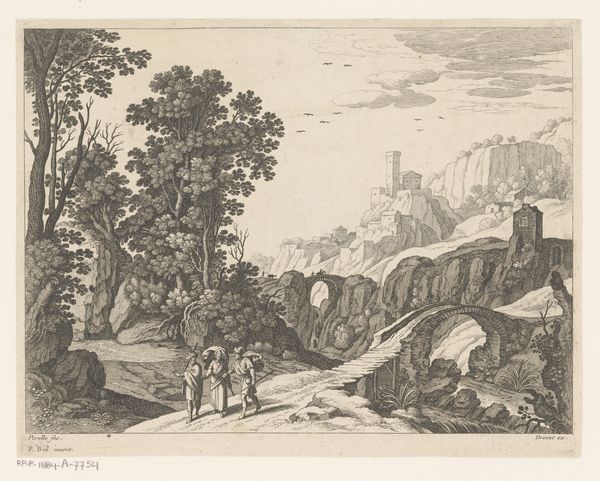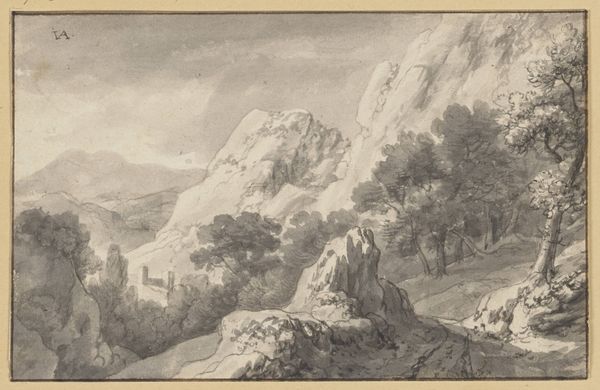
drawing
#
drawing
#
landscape
#
romanticism
#
line
#
cityscape
#
monochrome
Dimensions: height 116 mm, width 159 mm
Copyright: Rijks Museum: Open Domain
Curator: This drawing, "Gezicht op de ruïne van Vorburg," from 1810, presents us with a landscape infused with the Romantic sensibility of the period. Editor: My first thought is, how delicately rendered. It evokes a sense of tranquility tinged with a melancholic undertone—a quiet reflection on time's passage. Curator: Absolutely, and I think that quiet feeling really speaks to the socio-political moment too. Landscape art became a way of grappling with huge upheavals happening because of industrialization. Notice the remnants of the ruin juxtaposed with what appears to be a contemporary cityscape further down the mountain. This is, perhaps, less about nature itself and more about its intersection with history and power. Editor: It does suggest an elegy, perhaps even a social commentary on decaying power structures through the decaying ruin. What kind of social symbolism do you see in what seems like figures casually walking toward the town? Is there an intentional dissonance set between them and the monument they're juxtaposed to? Curator: Those figures create an incredible tension between human presence and nature’s grandeur. They are small and almost disappear against the backdrop. They're maybe a reference to ordinary people who, indifferent to the passage of time and crumbling histories, seem destined to simply perpetuate life in a landscape that surpasses their comprehension. The artist’s emphasis on linear detail makes every element a contributing component of a vast whole, highlighting themes of temporality, remembrance, and the quiet endurance of common people. Editor: I'm stuck by that phrase, crumbling histories. It connects to the broader intellectual movements questioning traditional narratives of authority, particularly with roots in revolutionary ideologies, even today. I find myself thinking about what it really means to face those kinds of collapses, those ruins, and just keep walking forward like those tiny figures in the drawing seem to be doing. Curator: What resonates for me is how it all blends—the beauty of decay with our own brief, insignificant presence within it all. What does one do, if not simply persist, day after day? Editor: Precisely, that's what hits me too. The artwork is a space that invites self-reflection, to wonder what can be learned when standing directly within history and precarity.
Comments
No comments
Be the first to comment and join the conversation on the ultimate creative platform.
